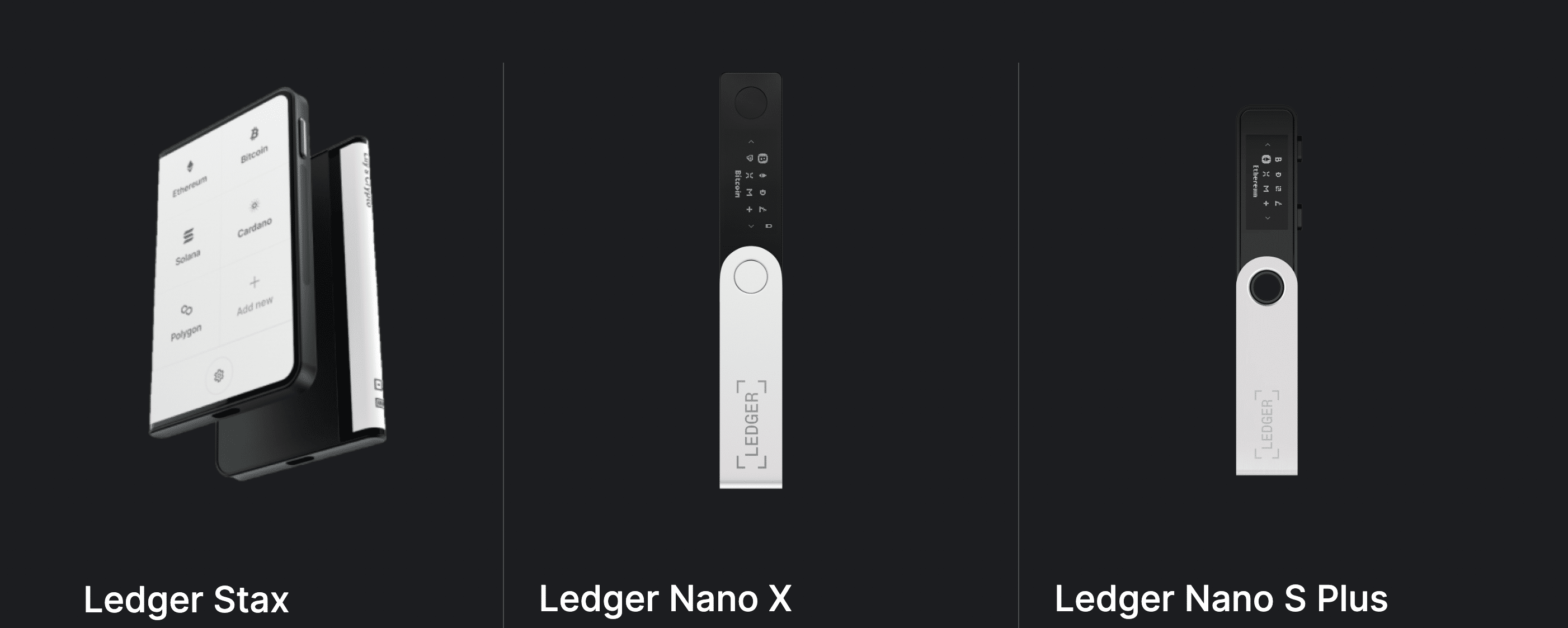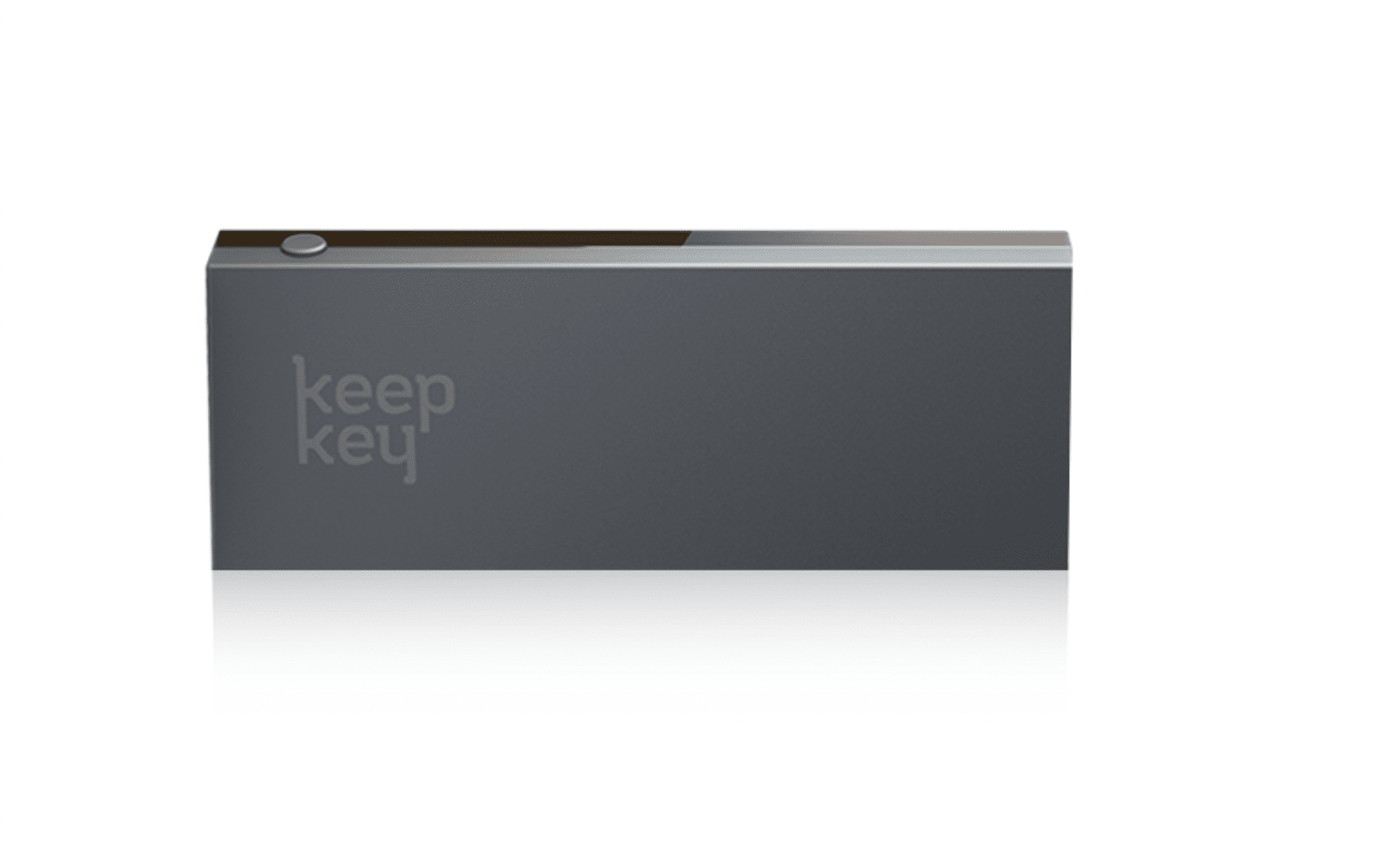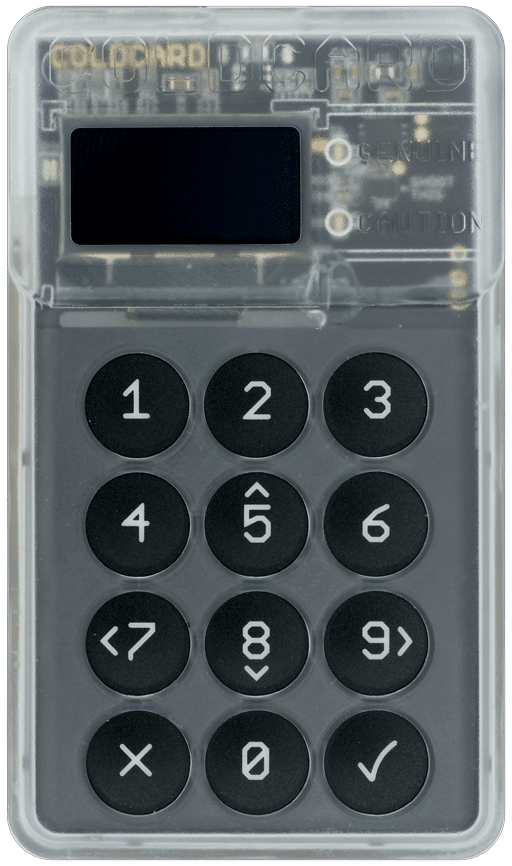Сrypto hardware wallets: 2023 review

If you read this, you probably already know what a crypto hardware wallet is and why it is safer than a hot one. In this article, we’ll review the most popular cold wallets with all their pros and cons.
How does hardware wallet work?
Hardware wallets may be the safest option for average users to store their cryptocurrency thanks to the isolation of the private keys from your very online (read “open to attacks”) and very vulnerable personal computer or smartphone.
Hardware wallets are so-called cold wallets. A cold wallet is a type of cryptocurrency storage in which the private keys are kept offline, typically on a hardware device — but a piece of paper is often good enough. Cold wallets are considered more secure than hot wallets — mainly software wallets connected to the internet —since cold wallets are less vulnerable to hacking and other online threats.
Cold wallets are often used for long-term storage of large amounts of cryptocurrency, providing an added security layer. The private keys, which are needed to access the stored cryptocurrency, are kept offline and are thus less susceptible to being remotely accessed by hackers.
Additionally, cold wallets typically have advanced security features such as encryption, password protection, and two-factor authentication. They also provide a way to back up and recover access to the funds in case the device is lost or damaged.
Different hardware wallet devices are currently available that aim to provide secure storage for crypto assets. This article will review some of the most well-known hardware wallets, comparing their features. The wallets discussed include:
- Ledger’s Nano X and Nano S
- SatoshiLabs’s Trezor One and Trezor Model T
- ShapeShift’s KeepKey
- Coinkite’s Coldcard and Opendime.
It should be noted that all wallets, except the Ledger Nano S, were review units provided to crypto.news by the manufacturers free of charge.
Ledger
Ledger’s Nano S and Nano X are similar in terms of functionality. Both devices interact with the same software and support the same cryptocurrencies. The Nano X, however, is rechargeable and can connect wirelessly via Bluetooth. It also has a larger, higher resolution screen than the Nano S. The Nano S can hold fewer applications than the Nano X. Still, this limitation only results in minor inconvenience.
The Nano S and the Nano X can be used on mobile devices, but the former requires a USB on-the-go cable. The Nano X is available on the official Ledger website for around $150. At the same time, the Nano S Plus — Nano S’ near-identical successor with more memory and a bigger screen — is priced at just under $80. The ledger Stax, which crypto.news has not yet tested, is listed at a price of $280.

Trezor
SatoshiLabs’ Trezor One and Model T share fewer similarities. The Model T has a larger color touch screen, a micro SD card slot, and a USB-C connector. Both devices support around 1,000 crypto assets. The micro SD card slot in the Model T allows for using the memory card as a two-factor authentication key that the device won’t work without, even with the correct pin.
Both devices require a computer or mobile device with dedicated software to operate and are supported by a long list of third-party software wallets. SatoshiLabs also offers a mobile wallet for device initialization, recovery, and other management tasks.
Prices
The Trezor Model T costs just under $220 for the standard version, about $1,000 for Gray Corazon titanium body version, and under $70 for the Trezor One. Both can be found on the official website.

KeepKey
ShapeShift’s KeepKey is another hardware wallet option for users looking to store their cryptocurrency securely. The device features a large OLED display for easy viewing of transactions and a brushed aluminum body for durability. KeepKey supports a wide range of cryptocurrencies, including bitcoin (BTC), ethereum (ETH), litecoin (LTC), and more.
The KeepKey client can manage the device available for Windows, Mac, and Linux. Additionally, KeepKey can be integrated with the ShapeShift platform, allowing users to buy, sell, and trade cryptocurrencies directly from the device.
Prices
The KeepKey is available for purchase on the ShapeShift website for under $50.

Coinkite
When it comes to Coinkite’s Coldcard and Opendime, both offer a unique approach to secure cryptocurrency storage. The Coldcard is a small, portable device that allows users to sign bitcoin transactions offline, even multi-signature. It has a small OLED screen displaying transaction details and a MicroSD slot for saving and loading transaction files. The Coldcard also has a built-in random number generator and supports multi-sig transactions.

The Opendime, on the other hand, is a small USB stick that functions as a physical bitcoin. It allows users to physically hand over the device containing a certain amount of bitcoin to someone else. The recipient can then check the balance by plugging it into a computer and checking the contained webpage.
To access bitcoin, a user must physically alter the device and puncture through a hole that changes the circuit and renders the private key accessible. The private key can then be used in any bitcoin wallet. This design limits the device to very few use cases and deprives it of security against physical access.
Prices
The latest Mk4 version of the Coldcard is listed at just under $150 on Coinkite’s website, while Opendimes are being sold in packs of three for under $70. All can be found at the CoinKite store website.
How to choose the hardware wallet fit for your needs
With this many options, deciding which hardware wallet is right for you may be challenging. The most significant factor is personal preference, especially considering all those devices are expected to be secure enough.
Opendime is less likely to suit your use case, as it is not protected from physical access and supports only bitcoin and litecoin with the version sold by the Litecoin Foundation. The only clear use case is users who want to exchange bitcoin or litecoin as if it were a physical asset without involving the blockchain.
Coldcard may be the best device for the bitcoin power user since it allows offline signing to the sd card, multi-signature signing, and other advanced features. No cryptocurrencies other than bitcoin are supported. In the past, the firmware also supported litecoin, but that feature was later removed.
Keepkey, Ledger and SatoshiLabs’ devices are very similar in purpose and scope. Still, KeepKey falls short of the competitors with much less support and less reliable and extensive software.
Ledger and Trezor hardware wallets support a wide range of cryptocurrencies, with Ledger seemingly having more third-party app support. The average user would not go wrong with either of those two. Still, based on the personal experience of the author of this article, Ledger is more user-friendly, and the Ledger Live crypto management software is more feature rich and easy to use.
Why use a hardware wallet
Hardware wallets offer unparalleled security advantages in cryptocurrency storage, primarily due to their air-gapped nature and absence of a centralized point of failure.
As physical devices are designed explicitly for safeguarding private keys, hardware wallets isolate sensitive information from internet-connected devices, significantly reducing the risk of hacks and unauthorized access. This offline storage solution, known as cold storage, is much safer from malware and other common cybersecurity threats, which are prevalent in software-based wallets or exchanges.
Moreover, hardware wallets incorporate robust security features such as Secure Element (SE) chips and cryptographic attestation, which bolster their resilience against physical tampering and cloning attempts. Users maintain complete control over their digital assets by storing private keys and signing transactions within the device, effectively sidestepping the risks associated with centralized entities.
Digital assets stored in a hardware wallet cannot be lost in a cryptocurrency exchange hack or bankruptcy. In other words, those who store their cryptocurrency on a hardware wallet have little to fear other than a market downturn at the prospect of another FTX-like event. Consequently, hardware wallets serve as a highly secure and reliable solution for individuals seeking to protect their cryptocurrencies from digital and physical threats.














